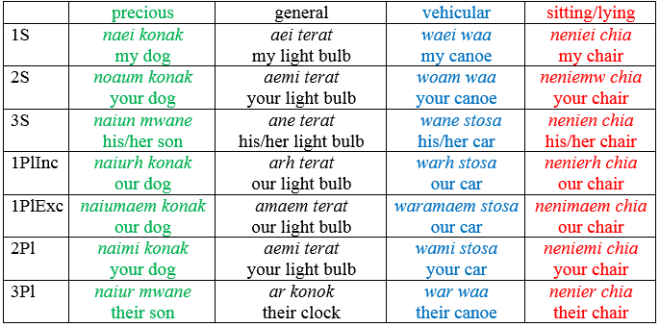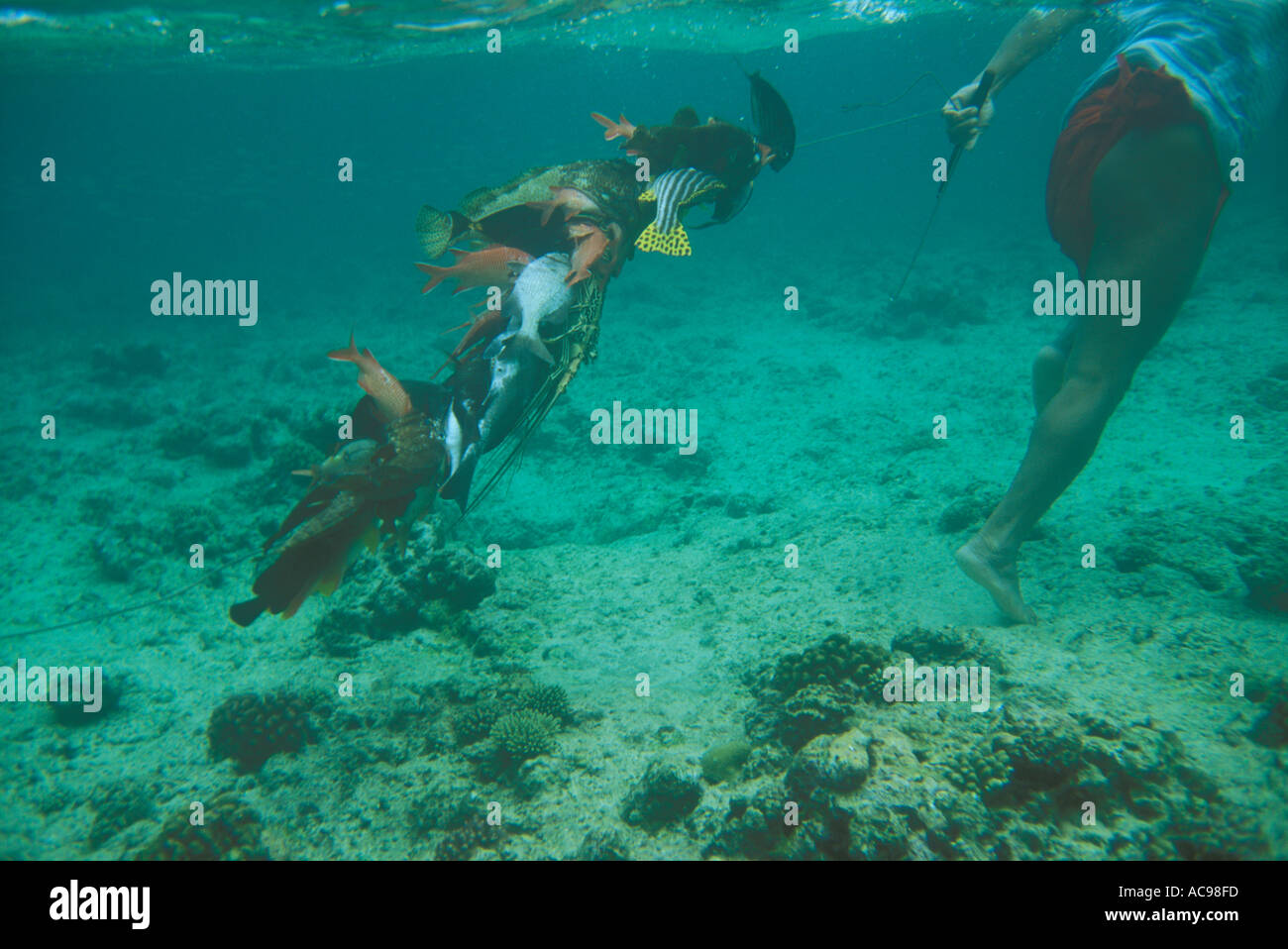In our previous article, we discussed the Possessive Classifiers present in the Satawalese language spoken in the Federated States of Micronesia.
In this entry, we will dissect some sentences to grasp a further understanding of the inner workings of this Micronesian language. In the first section, we will compare and contrast the names of various stars and constellations in Satawalese and English. In the second section, we will continue to explore the possessive classifiers that were the main feature of the previous article.
1. Stars and Constellations
Our first two stars are Procyon and Canopus, known in Satawalese as Paiunmanmeafaeng and Paiunmanmeeor respectively. (Note, the translations of the Satawalese are my own, and may not be correct.)
Procyon (pronounced with a soft „s“ sound) comes from Ancient Greek Prokyon (Προκύων), which means before the dog, because, at most northerly latitudes, it appears before the „Dog Star“ Sirius.
Paiunmanmeaefaeng, meanwhile is derived of several parts.
The first, paiun, means wing, and can refer to any flying creature, whether it be bird, insect, bat or other.
The second part, man, is a shortened form of the relative pronoun mane, which means either who or that,e.g. as it appears in phrases such as he who dares wins, or the light that brings the darkness.
The third part, meaef, is a shortened form of the verb meaefi, which means to feel.
The fourth, faeng, can mean one of two things: the first is canoe’s main platform, while the second is shelf/storage space or a platform for smoking fish.
All in all, my translation reads the wing that feels the platform for smoking fish.

(The best time to see this constellation is during late January, with Procyon at its brightest around January 24th.)
Our second, Canopus (the second brightest star in the sky),has several potential different origins. One of them comes again from Ancient Greece, where the brightest star in the now obsolete constellation of Argo Navis was named in honour of the captain of the ship that brought Menelaus to Troy following the kidnapping of his wife by Paris.
The Satawalese name is Paiunmanmeeor.
The first two sections, paiun and man mean the same as in the previous explanation.
The third section, me can have one of two meanings. The first is the conjunction and, while the second is the preposition from, and in this context I shall be using the latter definition.
Our last section is the word eor, which means south.
Hence, from Paiunmanmeeor we can create the translation the wing that (comes) from the south.
However, this is not the only potential translation. We could, if we wished, that eor is a shortened version of eoreor, which means the flowering branch of the coconut.
Hence, we read the potential translation the wing that (comes) from the flowering branch of the coconut.
Further, we could take this a step further and produce the potentially cumbersome, yet undeniable poetic sounding the wing that (comes) from the flowering branch of the southern coconut.

(The best times to witness Canopus in the night sky are in the last days of December and early February.)
2. Possessive Classifiers
Here are the aforementioned classifiers:

Aei a urutiw waamaem, kaepewou minikewe pisagemaem, amaem pai, sou noa noan soraen we.
We pulled our canoe down, and loaded our stuff, our voyage rations, and departed that morning.
Aei a urutiw waamaem means we pulled our canoe down.
Aei is the first person exclusive, i.e. the version of we that does not include the listener. It’s resemblance to the general version of my, as far as I am aware, is coincidental. (The inclusive version is si.)
a urutiw means pulled down. a is the Completed Aspect, and, as implied, refers to any action that has been completed, or is no longer being carried out. urutiw means to pull down.
waamaem means our canoe, and is derived from waa (canoe) and amaem (our, though not yours). In Satawalese, possessives can be attached to the end of the nouns they modify, though the rules for this are not laid out in the Sketch Grammar. Stylistically, this is my favourite part of the sentence as it closely resembles the vehicular form of the first person plural exclusive.
Whether the speaker, a man named Ligmai, was consciously aware of this at the time of speaking will probably remain unknown, though I prefer to believe that he did, and with an impish smile on his lips no less

(A successful fishing trip in the waters around West Fayu, one of the locations where the story from which this sentence hails takes place.)
kaepewou minikewe pisagemaem, amaem pai, means (we) loaded our items, our voyage rations.
kaepewou means to load on.
minikewe means things, and is composed of two parts: mini, which means thing; the second part, kewe, is the plural form of the definite article, which can either be attached to the end of the word, or come after it.
pisagemam means our items, and is derived from pisage, meaning items, and the possessive suffix -maem, which is a shortened version of amaem.
amaem pai, meanwhile, means our voyage rations. In this instance, you could replace amaem with waramaem. However, it is not necessary as the noun pai already means voyage rations. The same noun can also mean hand or paw.

(The five districts of Yap State, Micronesia. As Pikelot (Piig) hosts no permanent settlement, Satawal, the island on which Satawalese is spoken, is the furthest west of all the islands of Yap State.)
sou noa noan soraen we means (we) departed that morning or (we) departed in the morning.
sou noa means to depart. This is a two part verb, though there are two ways wherein one can interpret it. In both of these, sou by itself can mean to depart.
noa, meanwhile, has three separate meanings, dependent on context.
The first, which we can ignore in this instance, is the noun ocean wave.
The second and third, which are more pertinent, are as a verb meaning to go or as a direction marker meaning out/towards.
On a slight tangent, if you take all three of these separate meanings altogether, you can gain a window into the significance of ocean travel that is emblematic of the historical Polynesian experience.
noan soraen we means in the morning. Word for word, our translation would read as in morning the.
we is the singular version of kewe, which we saw above.
If you haven’t read part 1 then I highly recommend that you do so, since it goes into certain details that are not discussed here.
Furthermore, I have included in the source list a direct link to the Sketch Grammar that I used for most of my language research, and I encourage all those who wish to investigate it for themselves to do so.
Next time, we will be comparing a Celtic language with an African one, and the weird similarity that they share, which won’t be split into two parts.
Nevertheless, I look forward to seeing you again:
Same Wilf-time!
Same Wilf-channel!
Sources:
https://en.wikipedia.org/wiki/Procyon
https://en.wikipedia.org/wiki/CanopuRoddy, Kevin. „A sketch grammar of Satawalese, the language of Satawal Island, Yap State, Micronesia“, Univerity of Hawai’i Press, 2007
http://www.constellation-guide.com/canopus/
